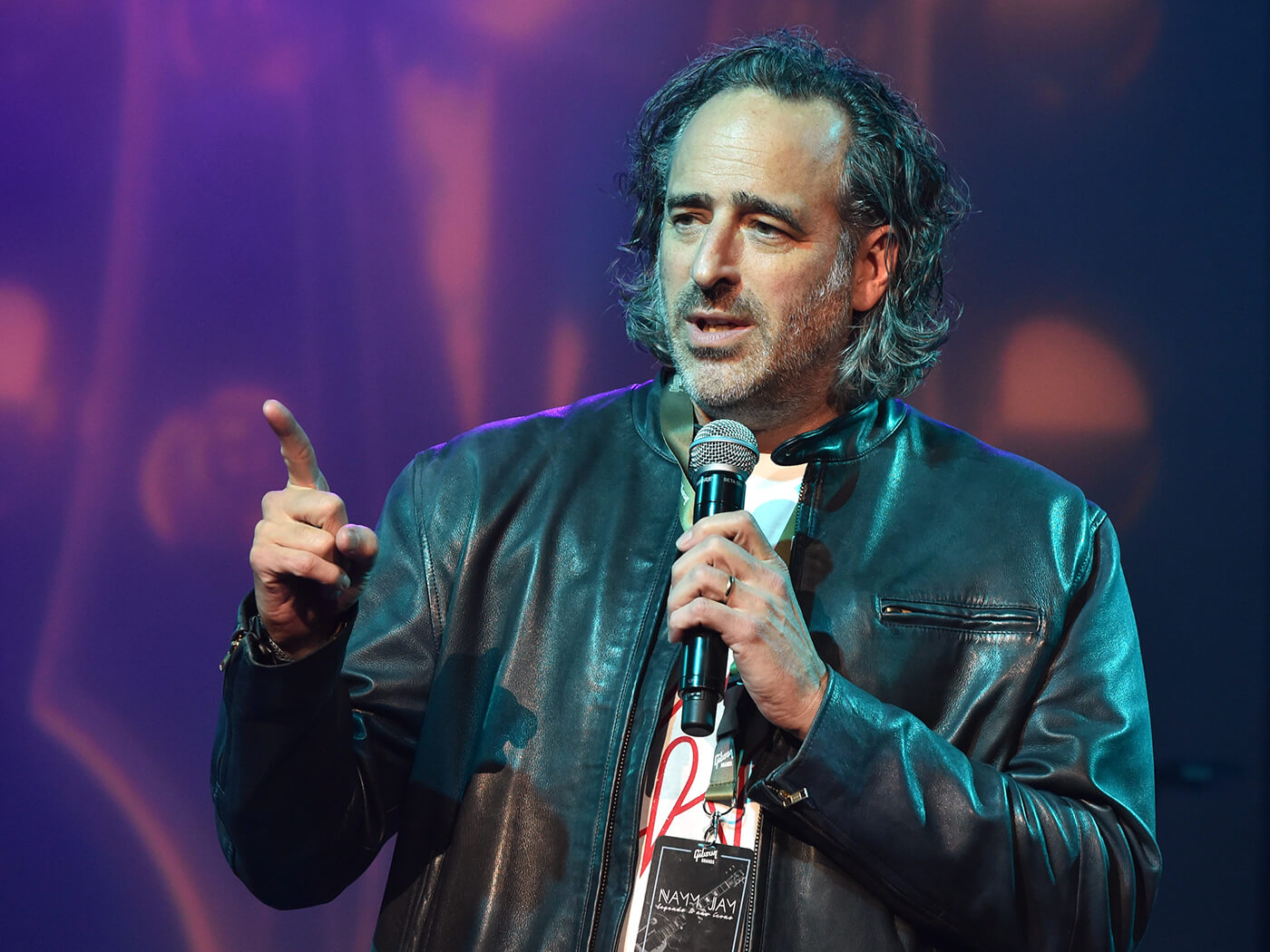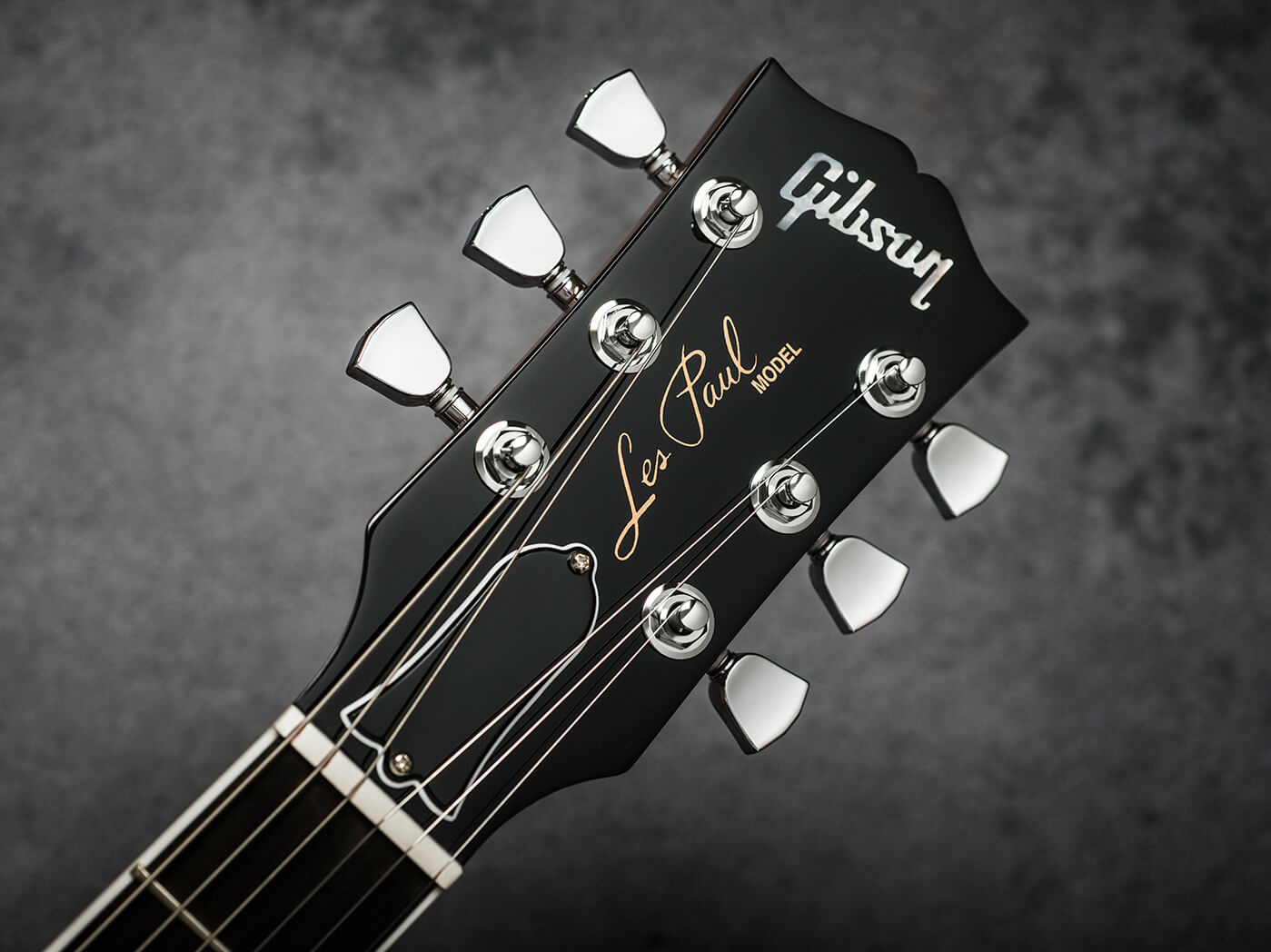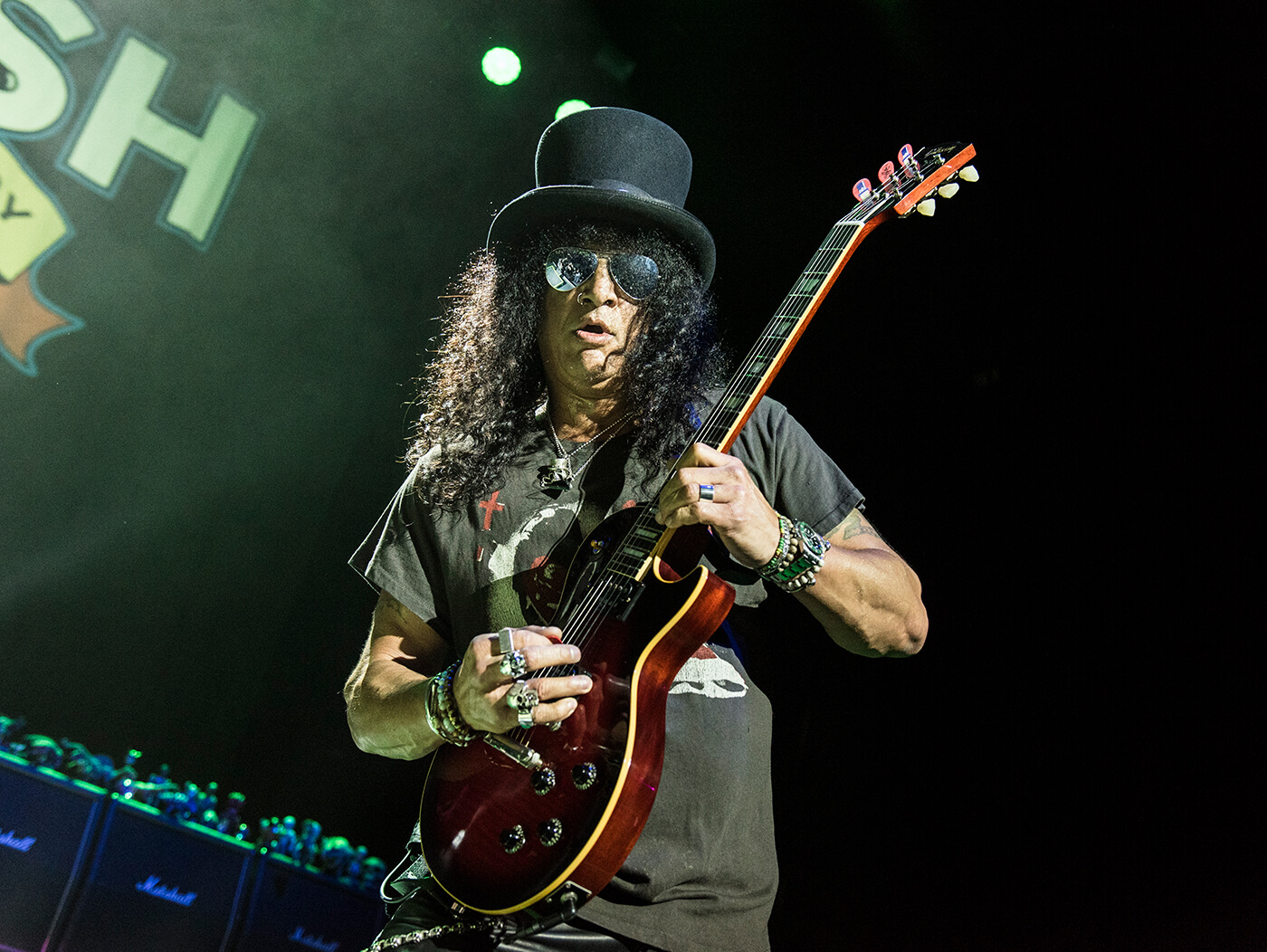Related Tags
“I’m absolutely passionate about making the guitar world stronger”: Gibson CEO JC Curleigh
Gibson boss talks collaboration, litigation and the challenges of 2019.

Image: Getty Images
It’s been a busy 12 months at Gibson Brands, Inc. Since the Nashville company’s new management team was unveiled a little over a year ago, an initial wave of positivity was followed by a series of social media storms thanks in no small part to Gibson’s multi-million dollar lawsuit against Dean and Luna Guitars and that Mark Agnesi video.
Expert opinion is still divided as to whether Gibson is the good guy or the bad guy in all of this – and with many of the most vocal protagonists having vested interests in the outcome of any major guitar trademark rulings, it’s hard to find a dispassionate view.
All that said, there are still plenty of reasons for Gibson to be cheerful as we approach 2020. Most importantly, the guitars we’ve encountered this year have been great. From the flagship 60th Anniversary R9 to the more affordable SG models, subtle tweaks and a renewed attention to detail have paid dividends and the company seems to be making better instruments today than it has for many years.
In July, the Summer NAMM show saw more positive strides in the shape of the company’s commitment to giving away one guitar every day for 1,000 days via the relaunched Gibson Foundation non-profit, along with collaborations with boutique builders via its Authorized Partnership Programme.
Following a Summer NAMM press conference that also included Night Sweats star Nathaniel Rateliff and My Morning Jacket’s Jim James – soon to be the recipient of a signature ES-345, the proceeds of which will be donated to youth-music projects – we sat down with Gibson CEO James ‘JC’ Curleigh to discuss all of the above and more.

Following a period of transition, are there are things you have to deal with that you wouldn’t choose to initiate if you were starting from scratch?
“Yeah, for sure. I think we’re in this world where – in a good way – there’s so much transparency. People can see what goes on right in front of them, in real time. But we are dedicated to making progress. And we made amazing progress on our guitars, and we listened, and we said, ‘Hey, people want high-quality guitars.’ Go back to the specs that everyone is looking for – the sound, the tone, the shape of a Gibson – and we did that.
“And then I heard that dealers wanted us to embrace us and let them represent Gibson the right way so they could connect with Gibson fans and guitarists in a way that could be really compelling. We said, ‘Okay, let’s do that,’ and we did. And our dealers and guitar shops have never been more excited about Gibson.
“And then we sort of stared this thing down and said – as we got momentum – a lot of people are copying us and we’d better let ’em know that ain’t cool and then of course tone, timing… and all that stuff comes out… but I really want to say that our intentions were straightforward. The interpretation went sideways…
“But at the same time, I have confidence in our ability to listen, learn and pivot quickly. I mean quickly. Let me just remind everyone – we’re eight months into this turnaround. Eight months. We’ve already launched a new collection, connected with artists and all the launches you heard about today with the Foundation and collaborations.
“My vision is that one year after we sort of set up the new Gibson, if we’ve learned a lot of lessons and we’ve pivoted and gotten stronger for it, then we’re gonna be stronger for the future. And while the smoke was up a few weeks ago, honestly I put on the noise-cancellation headphones – the Gibson ones! – and said we’ve gotta pivot this to collaboration. You saw what I said. I said, ‘We’re gonna make the pivot from confrontation to collaboration and it starts now.’
“I don’t mince words, as a leader. My dad was a general and when you say it, you do it. And then we pivoted hard into this collaboration mode, whether it’s with brands like Thalia or with the boutique guitar companies we announced today, or an apparel company, or quite frankly collaborating with artists.
“So I think there’s very real evidence that from a brand and from a leadership – and from an iconic brand that people know and love – they want to know that our intentions are good and our actions are equally good. And I think we’re gonna prove ourselves over time.”

Anybody who creates anything would be crazy not to protect their IP. But people have an emotional response to guitars. There are people who have owned Deans for 30 years, so they feel emotional about it. Were you surprised by the level of the response?
“I was and I wasn’t. At one stage, you talk about intellectual property and legal stuff and quite frankly that should never be in the same spirit as how we speak about our guitars and artists. That should be a side conversation about running your business. So that’s a good lesson that we learned.
“But, to your point, a lot of people out there want to know about it. Not all of those dynamics are created equal. There’s clearly the known enterprises that absolutely want to counterfeit, knock off – it’s the fake websites, the fake guitars. And you’ve gotta go after those, ’cause if you don’t, that gets out of control, guitarists get confused and quite frankly, the whole guitar experience gets mitigated. So we’ve compartmentalised those and that’s where we really reinforce our rights and we’re very successful at that, and that’s good for the industry.
“I think at the other extreme end of the spectrum are these known boutique guitar makers who are making 20, 30, 50, 100 guitars – they are amazing luthiers – and a lot of them don’t have knowledge of whether what they are doing is right or wrong in terms of shapes and all that. They’re not lawyers. So now we say, what can we do with them? And we start a conversation that leads to a collaboration.

“Not with all of them, but we now know what the lines are between conversation and collaboration and acknowledge that, yeah, these are some shapes that Gibson created but at the same time, we want to celebrate some of these shapes in many ways. So we’ve announced that path.
“And then the centre-point is always going to be a little grey. You know, that middle point of like, hey, there’s a brand that’s kind of doing things and did they do it long enough? Didn’t they? I’ve gotta tell you, like, I am in full coexist mode there. And we are. And we want to coexist, but at the end of the day, if we have no choice, and the last choice… then you have to leverage a bit of that and so be it.
“The V shape is interesting, but we own the Gibson Flying V. More recently, when someone does a GS instead of an SG and that looks just like ours… that’s recently. And then they actually call something a Hummingbird. And I go to Montana and I’ve got our team of luthiers there saying, ‘JC, do you know about this? What can we do about this? Can they really do that?’
“That’s that grey area. You wanna have conversations and try to coexist and that was the intention there – it went a little sideways, but we’re gonna get it back on track.”
Bad news travels fast these days. It must make managing PR a nightmare for a big company. There’s been a lot of positive stuff going on at Gibson – is it frustrating when that gets drowned out?
“For sure, let’s be clear, it’s been an unnecessary distraction. But it’s there and people’s interpretation is what it is. We know with social media that there can be a loud minority that has a lot to say. I’ve gotta tell ya, I don’t get distracted by it, but in certain areas where there’s an overtone or an undertone, whether it was on whatever issue – if you step back you say, wow, you know what? There’s a sense that we could pivot here.
“I’m not blaming the past but we inherited a number of issues, culturally, that were created years before I showed up. And I’m not blaming that at all, I’m just saying that’s what it is. People warned me, they said JC, you got a lot of cultural baggage. And some of it’s really good, iconic baggage – the amazing guitars – and some of it’s dark-side stuff and you’re gonna have to work through that.

“And I knew that coming into it. So, lessons learned. And I think what I can tell you is there’s been more focus and attention on us creating the future in a way that’s going to be what our fans want: bring Gibson back the right way with amazing guitars, connections to artists, reimagine your foundations, set up collaborations, launch new categories like strings, that are gonna be awesome.
“And if there’s other things that you could do, what would that be? And I’m like, ‘I’ll tell you what it would be.’ We owned the brand Oberheim. And last Thursday I met with Tom Oberheim and I gave him his brand back. It was emotional and I don’t know when I’ve ever seen that.
“The social media world can take its twists and turns but if you actually step back and look at the intentions and the true actions, the learnings and the pivots we’ve taken, I’m very confident we’re a learning organisation and we’re focused on the future. I think everything we’re doing now… the future really looks bright.”
Using Echopark as an example, how will collaborations work on a practical level? Presumably you’re not going to see a Gibson logo on the headstock of Gabriel’s guitars?
“No, he doesn’t want that either. What we want is an acknowledgement of these shapes where before, it was more about telling people what they can’t do. Now it’s about telling people what they can do. Let’s sign a super-simple agreement that says, hey, these are some of the Gibson shapes. We want you to use them for a number of guitars over a period of time and let’s figure out how to support each other on that journey. They’re not co-branded by any means, but it’s a collaboration.
“I came from a world, from Levi’s and fashion, where you are seeing some amazing collaborations taking place. And that’s what sparked my imagination to say, ‘Why can’t we take that same collaboration dynamic and put it into play here?’ It’s literally a new way of thinking and a new business model for both sides that wouldn’t exist if we didn’t go through some of those pain points.”

Could you envisage a future scenario in which a line of fully co-branded guitars is released?
“Well, let’s be clear, we do that today with artists and signature guitars. Take a Slash Les Paul. First of all, the signature on there is Orville Gibson’s. That’s a signature. Then you’ve got Les Paul, which is a signature, on a Slash guitar. So it’s a triple-signature collaboration over 60 years! That’s co-branding!
“But I don’t think the world needs more collaborations. They need more thoughtful collaborations. One plus one should equal three. Not just doing it for the sake of doing it, but do it for a real reason. It’s not just about the end guitar being awesome, it’s the collaboration intent, the ideas and the community.

“Quite frankly, I’m absolutely passionate about making the guitar world stronger and embracing collaboration. And on those edges where you need to fight the right fight, fight it. But that should be on the side. The centre is, the world should have more guitar, as the iconic leader in guitar, Gibson should play a role in making that happen.
“It’s my genuine intent beyond selling more guitars and improving quality, moving into new headquarters and growing the Foundation. In 20, 30, 50, 100 years, if the guitar matters more then than it did today, we’re doing something right.”
Read more on Gibson here.
